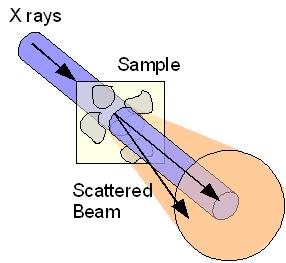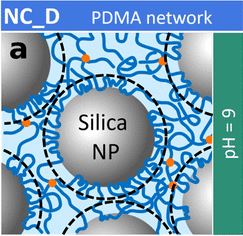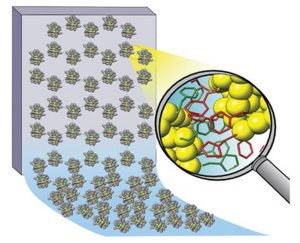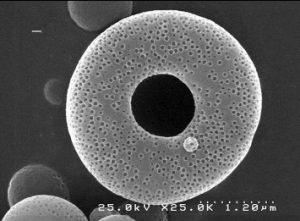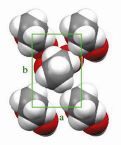Les rayons X sont utilisés pour étudier les propriétés structurelles des solides, des liquides ou des gels. Les photons interagissent avec les électrons et fournissent des informations sur les fluctuations des densités électroniques dans la matière hétérogène. Un montage expérimental typique est illustré à la figure : un faisceau monochromatique de vecteur d’onde incident est sélectionné et tombe sur l’échantillon. L’intensité diffusée est recueillie en fonction de ce que l’on appelle l’angle de diffusion 2 teta. L’intensité diffusée I(q) est la transformée de Fourier de la fonction de corrélation de la densité électronique.
Les expériences de diffusion aux petits angles sont conçues pour mesurer I(q) à de très petits vecteurs de diffusion afin d’étudier des systèmes dont les tailles caractéristiques vont des distances cristallographiques (quelques Å) aux tailles colloïdales (jusqu’à quelques microns).
What is measured in a Small Angle X-ray Scattering (SAXS) ?
Description de différentes expériences au LIONS / LLB:
- A high sensitivity SAXS pinhole camera for soft condensed matter
- High resolution calibrated Ultra Small Angle X-ray Scattering (USAXS) on a laboratory source
- A SAXS-WAXS experiment dedicated to nanomateritials
- The SAXS/GISAXS/X-Ray reflectometer beamline
